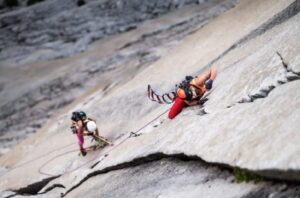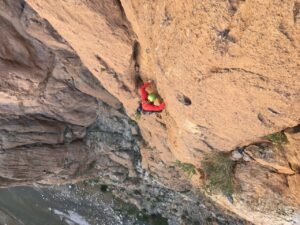Sixteen millimetres in length is all it takes to be the world’s deadliest insect. The size of an average little fingernail, it present little more than a shrill buzzing when close to your ears. But the malaria mosquito causes one million deaths worldwide every year. Even the Dalai Lama struggles to show compassion for mosquitoes.
In fact, as far as the world’s 10 deadliest insects go, the malaria mosquito is the largest in size. But dealing with insects in the wild isn’t just about a potential fatality. Ticks, as vectors of serious but non-fatal disease, are a prime example. (They are not insects, but we also cover small arachnids in this piece.) Likewise, some spiders can be deadly while others just make us sick and most have no effect on humans at all.
Of the 10 deadliest insects in the world — Kissing bugs (don’t be distracted by their name), the Japanese giant hornet, tsetse fly, bullet ant, driver ant, botfly and malaria mosquito — we can narrow the culprits down to three main geographical areas: Africa, Asia and the Americas. Warm, dry habitats give ideal breeding conditions for both disease and insects.
Ticks occur mostly in the Americas, although one Asian human-biting tick (the Asia Longhorn) has now spread throughout the Americas.
The 1954 film, The Naked Jungle, depicted army ants devouring an entire Brazilian forest in minutes. It’s more likely that army ants would annoy jungle dwellers to death. It’s their cousins, the bullet and driver ants, that do the real damage.

The Naked Jungle depicts army ants culling whole forests and humans.
Technically, bullet ants aren’t all that deadly, but they have the most painful sting of any insect. Reportedly, the sting feels like being shot with a bullet, and the sensation can last for 24 hours. If an unfortunate person happened to be stung by thousands of bullet ants at once, then yes, there is a risk of fatality.

The bullet ant.
Found in Central and South America, the bullet ant’s large, stocky pincers and reddish black body make them identifiable. Like other ant species, they work for their queen, but do sometimes fight with one another. They sting when provoked, and at the same time, they release a chemical that calls other ants into the area to sting repeatedly. Note to self: don’t injure a bullet ant and don’t get stung by one.
Hamish Blake of the Australian comedy duo Hamish & Andy tries on some bullet ant gloves in South America. The results are no joke.
In bullet ant country, wear over-the-knee boots and avoid colonies at all costs. The bullet ants release a warning scent before stinging, so if you first smell the bullet ant aroma, get out.
Driver ants are more likely found in Africa and attack everything that comes in their path, not just when provoked. They’re larger than the army ant and their pincers are at the side of the head rather than the front. Driver ants are aggressive by nature. They are known to plan their attack beforehand.
In some parts of Africa, driver ants are used to stitch wounds because when they bite, it’s difficult to remove flesh from their jaws. If you find yourself being bitten by a driver ant, use ice to reduce swelling and hydrocortisone cream to stop the itch. And don’t leave food on the floor to prevent them finding you appealing.
Some deadly insects make their impact by burrowing underneath skin. This makes it much harder to know when you’ve been attacked until it’s too late. The botfly’s larvae can live under human skin for more than 60 days. You notice this grotesque parasite only once the larva has hatched and moves beneath the skin surface.
The video below by National Geographic details botfly infestation in humans.
The best way to avoid becoming a host of botfly larvae is to:
- Cover up
- Avoid host flies
- Use insect repellent
- Sleep in clean areas (rubbish and food scrap free)
Fleas might sound like the better-natured parasitic cousin of the botfly. Rather than go beneath the skin like the botfly, they suck blood from the surface, like the mosquito. The female can lay more than 2,000 eggs in her lifetime, so they have the ability to spread like wildfire. Their bites can cause infection, which is where fleas have the potential to be deadly.
While fleas are common in cities, they can be equally prevalent in remote areas. Fleas like to hitch rides on animals, so you may want to avoid touching those that have not had flea treatments.
Kissing bugs, tsetse flies and malaria mosquitoes carry dangerous microorganisms that get injected into the bloodstream of the victim when they bite. They occur in different regions (kissing bugs in South and Central America, tsetse flies in Africa and the malaria mosquito throughout Asia).
Kissing bugs transmit changas disease, which kills approximately 12,000 people each year. They bite humans on the lips — hence kissing bug. This makes it easier to detect an attack, but they hide in cracks in the floor or around pets, and there is little you can do to avoid them. If bitten, get to a medic, since early detection can prevent illness.
The tsetse fly is Africa’s deadliest biting insect. It’s estimated that about half a million people have lost their lives to tsetse fly bites. The victim will mostly likely know they’ve been affected because they’ll feel sleepy. (The disease, trypanosomiasis, is classically known as African sleeping sickness) Fatalities occur when medical attention isn’t sought quickly enough. The appearance of a tsetse fly is quite different from a typical house fly. They have a longer, narrower body, and their sting visibly protrudes from their mouth. Wear long clothing to avoid becoming a tsetse fly feast and avoid brushing up against bushes.

The tsetse fly has a longer, narrower body than the house fly.
The killer bee is Africa’s most aggressive and dominant insect. They swarm after victims and attack in numbers, mainly targeting the face and eyes. With killer bees, it’s the attack itself that can be deadly rather than any toxin. They will follow any nearby humans for up to 24 hours after a disturbance. They look like typical honey bees, but behave like psychotic pit bulls.
They tenaciously defend their hive, so if you see a hive, steer clear. If attacked, run for shelter. An instinct might be to swat at the bees, but the more you agitate them, the fiercer they become. They’re fairly smart too; if you jump into water, they’ll swarm around until you resurface. Running indoors is the best defense, and light-coloured clothing is recommended, too. If you notice bees bumping into you, this is a sign that they are gathering around and about to start stinging.
The Giant Japanese Hornet is the largest hornet species in the world, growing to an average of two inches long. They cause approximately 40 deaths every year. The sting of Japanese Hornet causes an allergic reaction and dissolves tissue quickly. Much like the killer bee, they are aggressive by nature. If you’re traveling through eastern Asia, use precautions similar to those for killer bees.

The giant Japanese Hornet is aggressive by nature.
Many people find arachnids the stuff of nightmares, but they’re rarely dangerous. Of the more than 30,000 species of spider worldwide, less than 30 have caused human deaths.

The Sydney funnel web spider of Australia is considered the world’s deadliest. The spider has killed 13 people, although no one has died since 1980, when antivenom was developed.
The few deadly spiders transmit particularly potent venom. The time from the bite until fatality greatly depends on the spider and amount of venom injected. Symptoms may vary from swelling around the source of the bite, to discreet fang marks and a sensation of feeling sick.
If you suspect that a venomous spider has bitten you, go to the nearest doctor or hospital pronto. Venomous spiders don’t really attack unsolicited. Most incidents occur when you brush up against it, and it bites to defend itself. Checking shoes and clothing before putting them on is standard procedure in the tropics and other places that host deadly creatures.
If you’re traveling far from medical aid, the best policy is to carry antivenom, if you expect to be where deadly spiders live.
Also a member of the Arachnid family, ticks require blood in order to live. They’ll get it from humans or animals; they aren’t fussy. They attach themselves to humans by reaching out and clinging to skin. Since ticks can’t jump, wear long clothing, well tucked in, and steering clear from branches and bushes if possible. The good thing about ticks is that they take a long time to attach, sometimes many hours. A thorough check for ticks, especially in warm, most areas like head, navel or underarms, is standard procedure after a hike. In many places, they’re most prevalent in spring.
Once ticks attach themselves to skin, they can feast for days, In the process, they can pass onto serious conditions like Lyme disease or encephalitis. You can get vaccinated ahead of time for tick-borne encephalitis.

The tick can’t fly or jump but latches onto skin as you pass.
Symptoms of tick bites can include rash, swelling, localized pain or even numbness and paralysis. If you find yourself bitten by a tick:
- Grab the tick as close to the skin as possible and pull straight out
- Check the bite to see if any parts of the tick have been left in your skin
- Clean the bite area with soap and water
- Keep the tick in a container, if possible, and take it with you to the doctor

Asian centipede bite. Photo (and victim): ExWeb writer Martin Walsh
Although the bullet ant is considered the champion, there is some competition for the most painful creepy-crawly sting. Although not an insect, Scolopendra subspinipes is an intimidatingly large species of predatory centipede credited with at least one confirmed human fatality. The species occurs across Asia and has a variety of common names, depending on the country: Vietnamese centipede, Chinese red-headed centipede, jungle centipede, orange-legged centipede and red-headed centipede.
Whatever you call it, it’s not a friendly critter. Scolopendra subspinipes is highly venomous, extremely aggressive and strikes with little provocation. It can grow up to 10 inches long and consumes pretty much anything it can get their jaws into, including mice, scorpions, spiders and even snakes.
The centipede’s venom allows it to tackle much larger prey, and recent studies have suggested that it may have the highest capture efficiency of any venomous animal. The venom is a complex cocktail of neurotoxins that simultaneously attack the victim’s respiratory, muscular, cardiovascular and nervous systems. Yikes.
If this sounds exceedingly painful, you can rest assured it is. In 2016, one of ExWeb’s writers, Martin Walsh, was bitten while barefoot on an island off the coast of Cambodia. During a storm, he was marooned overnight with only whiskey, sleeping pills and paracetamol to dull the pain.
The pain was extreme and immediate. It continued to build as the night wore on, reaching its zenith six hours after envenomation. The searing pain radiated up his leg in waves and kept him awake, sweating and groaning, until he reached a hospital and was hooked up to morphine 18 hours later. “It was by far the most painful experience of my life,” he says.
While some of these insects are easy to avoid by applying simple common sense, some insects are more mischievous and predatory by nature. The best advice is:
- Know which pests are common in your destination, before arriving
- Obviously don’t provoke them
- Use insect repellent when possible
- Maintain clean surroundings and sleeping area
- Seek medical attention as quickly as possible if bitten
- If traveling to malarial regions, take medication before arrival.
- If you’re far from medical aid and traveling through areas with venomous spiders, carry antivenom with you






